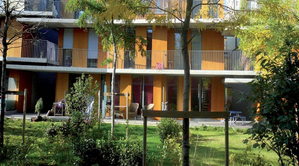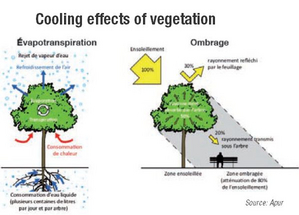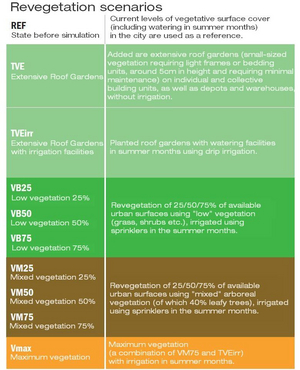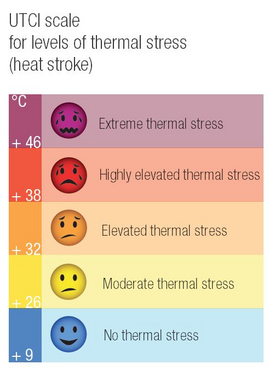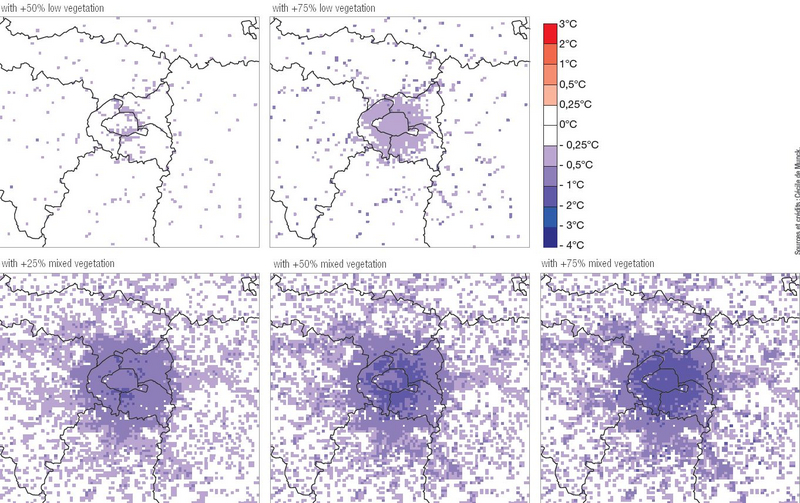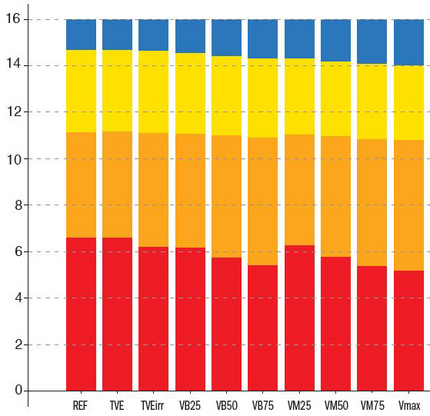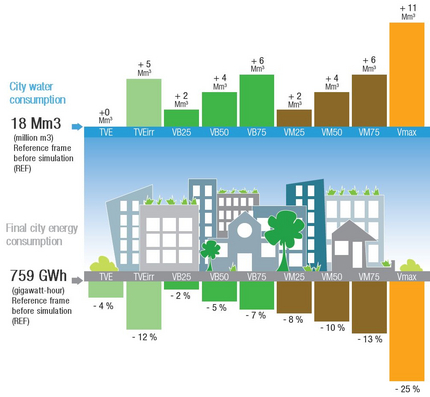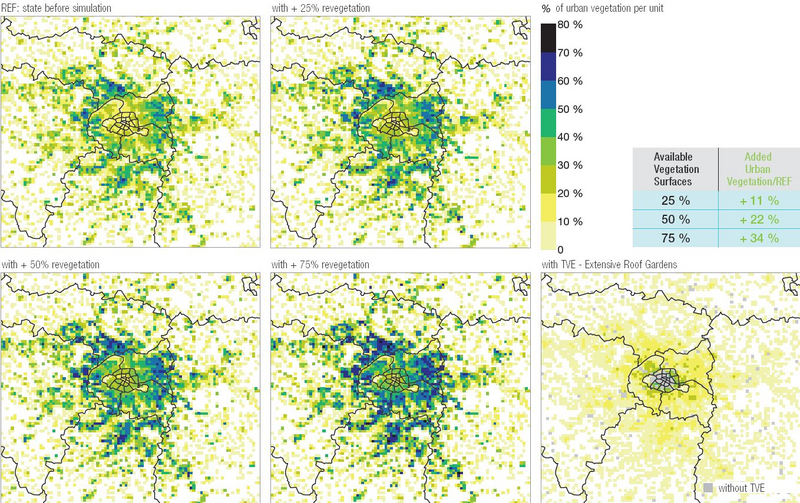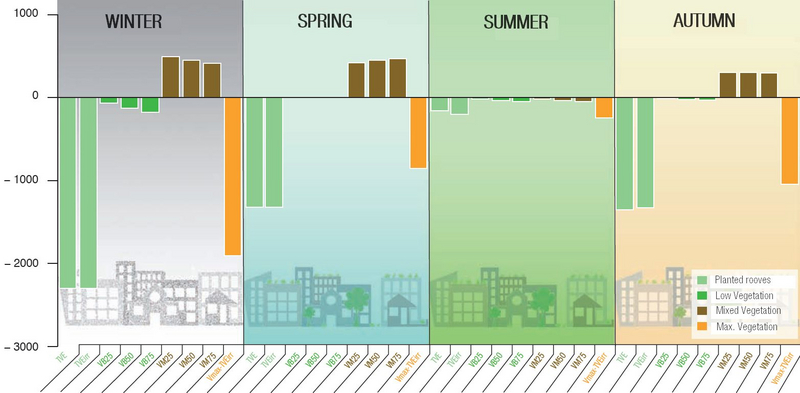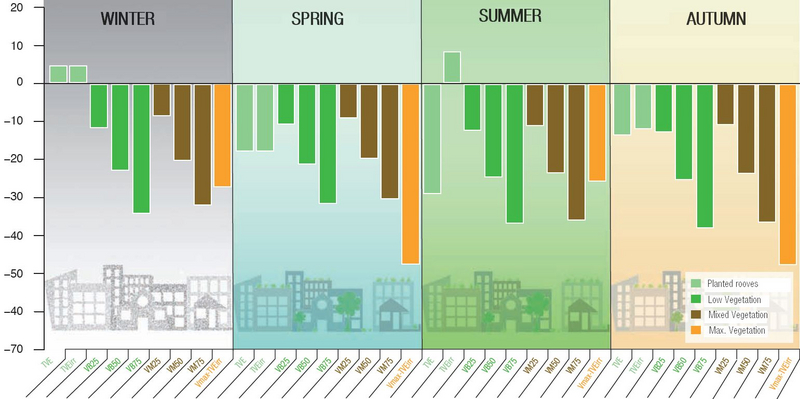Increasing revegetated open ground surfaces in cities also limits the effects of thermal stress (heatstroke) felt by individuals at street level. Here also, this effect increases with the rate of revegetation and the proportion of arboreal vegetation (cf. "Thermal comfort/stress during a heat wave according to UTCI scale"). For example, increasing the rate of revegetation of urban surfaces from 25% to 75% using low vegetation allows the amount of time spent experiencing extreme heatstroke under the sun, or highly elevated heatstroke in the shade, to be diminished by 30 minutes.
However, arboreal vegetation strategies are more effective, especially in districts with multi-dwelling units (cf. "Thermal comfort/stress during a heat wave according to UTCI scale"): revegetation of 75% of available surfaces in these kinds of urban areas allows a reduction in the amount of time a person spends experiencing highly elevated heatstroke of more than 1 hour, compared to only 40 minutes in individual dwellings.
It must also be noted that the impact of arboreal strategies have been underestimated in this study, because the effects of tree shade are not currently taken into account in the data model and calculation of "felt air temperatures".
Reduction in the use of air conditioning
The cooling of the exterior microclimate induced by revegetation leads to a reduction in the use of air conditioning, and therefore of associated energy consumption. Usage rates also vary depending on the type of revegetation measure and the proportion of ground surface having been planted (cf. "Water and energy consumption during the 6 days of a heat wave according to revegetation scenarios").
Without specific adaption (REF), the consumption of energy used for air conditioning counted cumulatively across the study area amounts to 759 GWh (gigawatt-hours). Non-irrigated planted rooftops function primarily as insulators, creating energy savings of around 4%. Irrigation increases their evapotranspiration effect, leading to an even more significant reduction in final energy consumption (12%).
By regulating the exterior microclimate, revegetation strategies indirectly cause a reduction in the demand for air conditioning in buildings: the maximum effect is observed with a 75% revegetation rate of available ground surfaces using mixed arboreal vegetation. This results in energy savings of 13%, directly comparable to the performance levels expected from the installation of TVE irrigated rooftop gardens.
